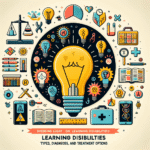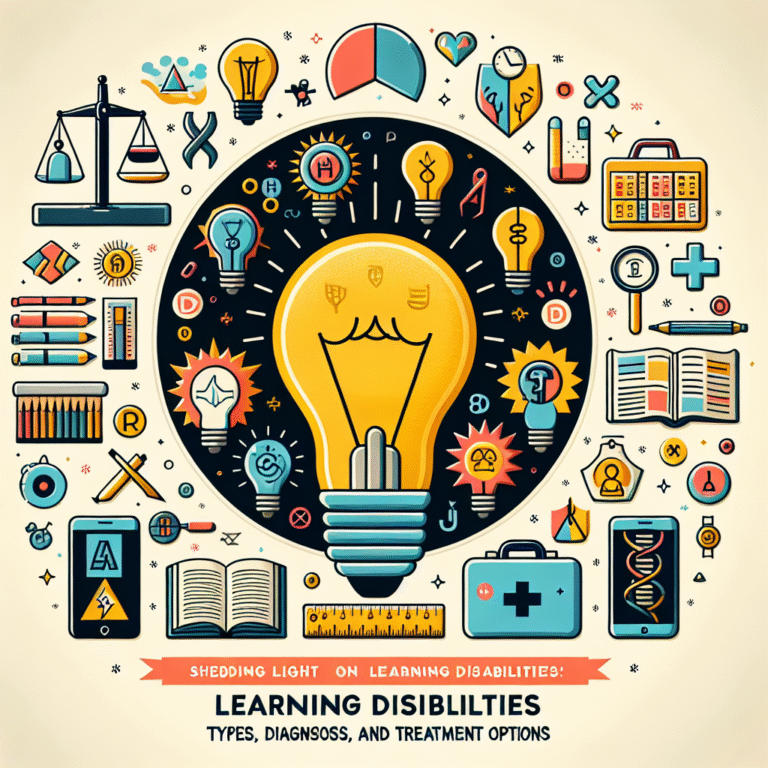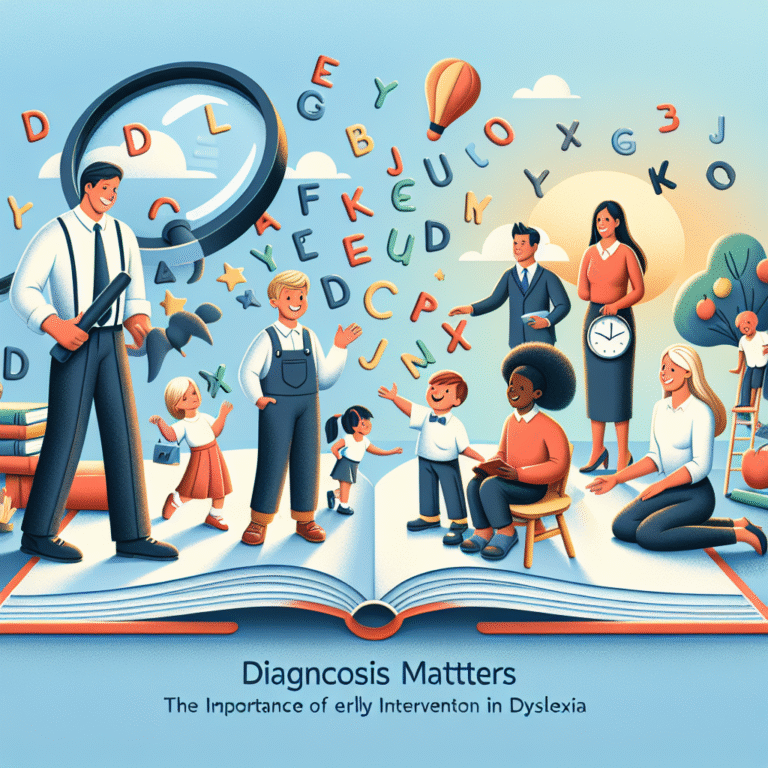
Navigating the Discussion: 5 Essential Tips for Talking to Your Child About Learning Disabilities
Introduction
Talking to your child about learning disabilities can feel like walking a tightrope—one misstep, and the conversation could lead to confusion or, worse yet, a sense of shame for your child. Yet navigating this discussion is not just important; it’s essential. By fostering an open and supportive dialogue about learning differences, you empower your child to embrace their uniqueness and advocate for themselves. This article delves into “Navigating the Discussion: 5 Essential Tips for Talking to Your Child About Learning Disabilities,” providing valuable insights that can help ease this potentially daunting conversation.
Understanding Learning Disabilities
Before we dive into the tips, it’s crucial to clarify what learning disabilities are. Learning disabilities are neurologically-based processing problems that can interfere with learning basic skills, including reading, writing, or math. According to the National Center for Learning Disabilities, about 1 in 5 children in the United States has a learning disability. Remembering these statistics can help frame the conversation, normalizing your child’s experience and showing that they are not alone.
Case Study: Understanding the Landscape
Take the case of Alex, an 8-year-old diagnosed with dyslexia. His parents, aware of the challenges he would face with reading, approached the topic by first discussing what dyslexia meant. By modeling acceptance and understanding, they created an open environment that allowed Alex to express his feelings about his learning difficulties. This proactive approach reassured him that he wouldn’t face judgment, thereby boosting his self-esteem. Alex’s story is a prime example of how initial conversations can set the stage for ongoing dialogue.
Tip 1: Start Early and Be Proactive
The best way to navigate the discussion about learning disabilities is to begin. Early conversations can make a world of difference. Starting the dialogue before problems arise at school means your child won’t see their disability as a flaw but rather as a different way of learning.
The Power of Early Conversations
Consider the story of Emma, a 10-year-old girl diagnosed with ADHD. Her parents began speaking about her condition as soon as they understood what it meant. During family meetings, they discussed strategies for managing her focus. This proactive approach equipped Emma with the tools necessary to navigate her challenges, and drawing attention to her strengths helped her develop a positive self-image.
Quick Tip: Use Analogies
Sometimes, simple analogies can be incredibly effective. Describe learning disabilities in relatable terms, like comparing them to a car that runs on different fuel. This helps put things into perspective, normalizing your child’s unique way of processing information.
Tip 2: Encourage Open Dialogue
Navigating the discussion is most effective when it’s a two-way street. Encourage your child to ask questions and share thoughts and feelings about their learning disabilities. This interactive approach can foster an environment of trust and respect.
Creating a Safe Space
To further exemplify this point, let’s explore the case of Sam, a 9-year-old boy with a learning disability. His parents established a weekly “talk time” where Sam could voice his feelings and concerns regarding school. This ritual not only encouraged Sam to articulate his emotions but also made the family closer. Communication became a tool of empowerment, helping them navigate tricky topics together.
Quick Tip: Use Open-Ended Questions
Ask questions that invite your child to express themselves, rather than answer with a simple “yes” or “no.” For instance, “How do you feel when you find reading challenging?” This can lead to deeper discussions, allowing you to explore emotions and strategies together.
Tip 3: Celebrate Strengths and Abilities
It’s crucial to balance discussions about learning disabilities with conversations about strengths and abilities. This approach not only fosters resilience but also builds self-esteem, reminding your child that they possess unique talents irrespective of their learning differences.
Positive Reinforcement in Action
In a study conducted by Dr. Sally Shaywitz, co-director of the Yale Center for Dyslexia and Creativity, children who are taught to focus on their strengths experience improved academic outcomes. Take the example of Sofia, a 12-year-old girl who struggled with math. Her parents encouraged her artistic talents while gently guiding her through math tasks. By embracing both her strengths and challenges, they maintained Sofia’s confidence, allowing her to flourish in multiple areas.
Table Example: Strengths vs. Challenges
| Strengths | Challenges |
|---|---|
| Strong verbal skills | Difficulty with reading |
| Creative problem solver | Struggles with math concepts |
| Good at visual learning | Needs more time for writing |
This table illustrates the balance between strengths and challenges, emphasizing that no child is defined solely by their learning disability.
Tip 4: Utilize Resources and Professional Support
Navigating the discussion about learning disabilities becomes easier when you leverage available resources. Collaborate with teachers, counselors, and support groups to gather insights and tools that can aid your conversation.
Reaching Out for Help
Consider the story of Mia, a 14-year-old girl diagnosed with nonverbal learning disability. Her parents found support through a local parent group, allowing them to connect with other families in similar situations. They discovered numerous resources—like books, workshops, and webinars—that equipped them with tips to discuss learning differences effectively.
Quick Tip: Create a Resource Toolkit
Gather informational pamphlets, recommended books, and websites. Having these materials on hand can facilitate smoother conversations, enabling you to share information in an accessible way.
Tip 5: Foster Self-Advocacy Skills
Instilling self-advocacy skills in your child is key to navigating their educational journey. When children learn to express their needs, they can better navigate challenges related to their learning disabilities.
Case Study: The Empowered Learner
Meet Dylan, a high school student diagnosed with a learning disability. With the guidance of his parents and teachers, he learned to articulate his needs, such as requesting extra time on tests or preferred learning styles. This newfound confidence allowed him to take control of his education, resulting in better academic performance and personal growth.
Actionable Steps Towards Self-Advocacy
Encourage your child to:
- Practice expressing their learning preferences.
- Identify what accommodations they might need.
- Communicate with teachers regarding their learning style and needs.
By taking these steps, your child will grow into a self-advocate, better equipped to face educational challenges.
Conclusion
Navigating the discussion about learning disabilities does not have to be an overwhelming task. By adopting proactive strategies, cultivating a supportive dialogue, and emphasizing strengths, you can guide your child through this process with confidence. These conversations can ultimately foster resilience, acceptance, and success on their unique educational journey.
Understanding and addressing learning disabilities requires patience and openness, but the rewards are immeasurable. As you initiate these conversations, remember that your approach plays an essential role in shaping your child’s view of themselves and their learning journey. Embrace this opportunity to connect, empower, and inspire your child toward a brighter future.
FAQs
1. How can I tell if my child has a learning disability?
Look for common indicators such as difficulty with reading, writing, or math that is inconsistent with their overall ability. Consulting with a licensed psychologist or educational specialist can provide a formal evaluation.
2. What if my child doesn’t want to talk about their learning disability?
Be patient and let your child set the pace for the conversation. Try to engage during appropriate occasions, such as after school or during family activities, to create a relaxed environment.
3. How can I support my child’s learning at home?
Create consistent routines, offer resources that align with their learning style, and celebrate accomplishments—no matter how small—to bolster confidence and self-esteem.
4. What role do teachers play in addressing learning disabilities?
Teachers can provide personalized strategies, accommodations, and support in the classroom. Collaborating with educators ensures that your child receives the necessary help.
5. Are there support groups for families dealing with learning disabilities?
Absolutely! Many organizations offer online and local support groups for parents and families to share experiences and resources.
Navigating the discussion about learning disabilities may come with its challenges, but embracing the dialogue can empower both you and your child. Now is the time to initiate open conversations and foster self-acceptance, ultimately paving the way for a more inclusive and understanding educational experience.







